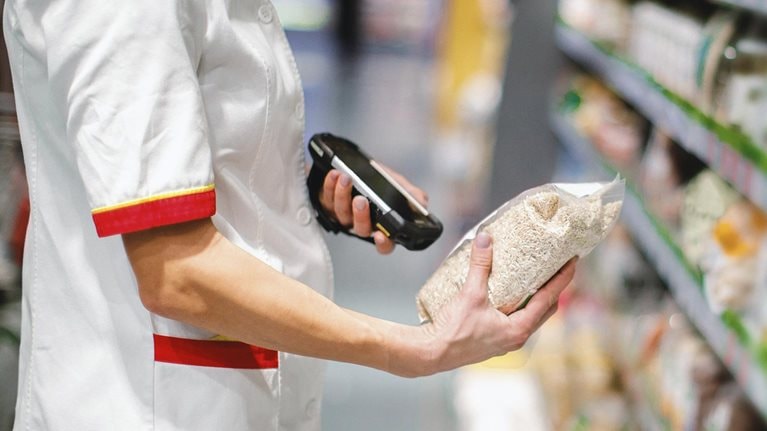Question: The past year has been incredibly disruptive for retailers. Which trends and developments were most notable for Tesco?
Matt Simister: Last week marked a full 52 weeks of COVID-19. We had a set of plans and then the pandemic happened. Since exactly the first week of our financial year, we were thrown into a crisis. If you look at the whole year, you get a particular perspective, but the shape was very different at various phases of the pandemic.
One interesting development is that governments in every one of the countries where we operate recognized that food retailing is a critical part of the country’s infrastructure and society. Even in markets with regulatory uncertainty, this has brought us closer to the governments. We’ve had more direct contact, whereas sometimes we found it harder before. And the trade associations have been very active and a constant leader in how to plan the country’s food supply effectively. I think people working together to try to supply food to everybody was pretty crucial to society in each country.
The hierarchy of needs really came to the fore. You saw very clearly that safety was number one. If customers did not want to go to a store, they could shop with us online. Many customers chose to visit our larger stores, where they felt safe but could also get everything they needed in one shop. Many chose to visit their nearest neighborhood store, and indeed in some cases were explicitly directed to. Across the formats we have seen a sustained shift to less visits but with bigger baskets. Being able to access food and essential requirements at the right price in the safest way possible has been the primary objective.
Question: How do you see the pandemic shaping the industry in the coming years?
Matt Simister: I sense very distinct moods in each market. It was very difficult in the UK during the initial lockdown, while the Central European markets locked down very quickly and very effectively. You’ve almost got the reverse happening now, where the mood in the UK is quite buoyant because 40 percent of the adult population have been vaccinated and people see a road map forward.
In Central Europe, cases are still escalating. Just this week, we’ve had interventions in the Czech Republic and Hungary as the situation worsens. There’s a long way to go, so it feels a bit premature to be talking about the ongoing and sustained impacts while we’re still in the crisis.
The sustained patterns will stem from the changes to customer lifestyles. I think it’s very unlikely that everybody is going to return to the workplace for the full week, for example. And that’s going to affect the way that people shop. I’m sure that some of the shift online will accelerate as a result of people interacting with the channel more broadly.
Question: How did the online shopping business grow in your markets?
Matt Simister: We doubled our online business this year in Central Europe, but only to about 3.5 percent of sales. Within our three markets, the Czech market is the most developed. We are number two in the Czech market, competing against pure players like Rohlik and Košík, and customer service propositions are quite advanced. In Hungary, we are the market leader, competing with Auchan and Spar as well as Rohlik (with Kifli), which is trying to get a foothold there too. And in Slovakia, we are the key player in a smaller market, which we are in the process of developing as we improve our offerings across the region.
Online business in the UK has also doubled from a much larger base, and this drives our leading position in online food retailing in Europe. We very much see ourselves as a multichannel retailer and will continue to invest in online, convenience, and our core supermarket and hypermarket formats.
We expanded our online reach quite significantly during the pandemic, extending the number of stores from which we are serving customers online in every one of the three markets. And that enabled us to more than double our capacity, which was great, but we still reach only about half of the population in the three Central European markets, whereas in the UK we cover the whole market.
Our online business has gone through phases. First, we expanded fast to meet changing customer needs. Then we had a phase of making it more profitable while consolidating market share. And I think we’re now in the third phase, where we prioritize both. So our strategy is to grow online and to grow profitably.
Question: How would you see your mix of formats evolving over the next several years?
Matt Simister: We now run four store formats in Central Europe: convenience stores, supermarkets, compact hypermarkets, and large hypermarkets. Over the past three or four years, we’ve been rightsizing our large hypermarkets and now don’t operate formats of 10,000–16,000 square meters anymore. Most of them are now 6,000 square meters or smaller. I do think the oversized hypermarkets will be challenged going forward as the nature of the physical one-stop shop changes with the development of online shopping. However, in the Central European markets, compact and large formats in good locations within larger cities still do very well. And some of the prime shopping malls still represent the best shopping destinations.
Our supermarkets do very well everywhere, so I don’t see a threat to that format. In fact, I think one of the reasons discounters do well is because they are a supermarket format.
Question: Describe what you mean.
Matt Simister: My observation of watching discounters evolve across Europe is they start by winning customers’ top-up shops, and then evolve to take more of the main shopping missions too—they are limited-range, competitively priced, often well-located supermarkets. Their roots are in low-priced core groceries, but of course as they develop their fresh and chilled ranges and take on more brands, they become more like a supermarket. Their cost structure also evolves accordingly.
I think that the German discounters are very good retailers, by the way. They have a simple and effective operating model with high sales densities, which is transferrable across multiple geographies via many locations. I have a particular respect for Lidl, as they are a leading player in all of the markets we operate in. Their offer is limited by definition, so it’s not for everyone, or every mission, but they have a high value perception in Central Europe and are certainly formidable competitors.
Question: Our research suggests that grocery retailers will face increased price pressure and downtrading. Is that what you’ve seen?
Matt Simister: Inevitably, price will continue to be a key driver for customers. We launched our Starlines three years ago in Central Europe, which means that customers never need to go elsewhere to find cheaper prices. These lines are predominantly Tesco-branded, and sales have been growing every year. I imagine that this trend will continue. During the last year we’ve also seen that more households appear to be struggling toward the end of the pay period. Obviously this illustrates that we have to be sensitive to changing needs.
In Central Europe, we’ve also seen significant and sustained pay inflation in every market as governments increased wages to drive disposable income and consumer spending. Fears of unemployment are likely to temper this trend, but I think customers’ expectations of value will continue to increase—quality, freshness, and pricing. As ever, the retailers who are able to deliver the best overall value will be the winners. In Slovakia, for example, we’ve already seen customers who were asked to shop in the village store in late December return back to Tesco for our better ranges, fresher food, and lower prices.
Question: How do you see automation shaping Tesco’s approach to stores and operations?
Matt Simister: For our business in Central Europe, scan as you shop and mobile shopping will become bigger over time. Automation and robotization are being considered from a cost perspective. We currently automate back-office administration in our service centers.
We’re also looking at distribution center automation quite seriously. There’s still a lot of work we can do to optimize our supply chains generally. Automation will probably play a part in that. Ultimately, it’s a choice of where you want to allocate your capital.
But I don’t think automation is a one-dimensional subject. We are one of the biggest private-sector employers in all of the markets where we operate. Retail is fundamentally a people business: it’s a business run by people, serving people. We need to reflect the communities that we serve. If you want to understand why Tesco does what we do, it is because of our role in the communities we serve and the communities we employ.
Question: Looking to 2021, what are the three most important things you would like to achieve?
Matt Simister: I’ll prioritize improving customer satisfaction, stable cash generation, and capital discipline. There are big capital decisions, and you have to balance the strategic customer trend with the short-term economic reality. What typically drives retailers out of business is poor capital discipline. These are the real choices for us. That’s why we need to gear up to be very responsive to changing customer needs in the short term while we set ourselves up to be the most accessible and preferred retail choice for customers in the long term.


